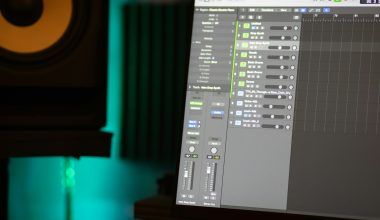Are you an independent artist wondering how to share your music with the world? You may think hiring a distributor is the only way, but it’s not. Today, you can distribute your music on all streaming platforms without a distributor. It may sound overwhelming, but with the right guidance, it’s completely doable. Let’s dive in and explore the process together.
Why Go Without a Distributor?
Many artists choose distributors to handle their music releases because it’s convenient. However, distributors often take a percentage of your earnings or charge fees for their services. By skipping the middleman, you keep full control over your music and retain all the revenue. Additionally, you’ll gain firsthand experience in the music distribution process, making you a more informed artist.
Understanding Digital Music Distribution
Before you start, it’s essential to understand what digital music distribution means. It’s the process of making your music available on streaming platforms like Spotify, Apple Music, Amazon Music, and YouTube Music. These platforms have millions of listeners who might fall in love with your music. Without a distributor, you’ll be managing this process yourself—and that’s empowering.
Preparing Your Music for Distribution
First things first: your music needs to be ready. High-quality tracks are crucial because platforms have standards, and listeners expect professional sound. Here’s what you should do:
- Ensure High-Quality Recordings: Use professional recording equipment or book studio time. Clear and polished audio is non-negotiable.
- Master Your Tracks: Mastering balances your songs’ volume and enhances their overall sound. You can hire a professional or use online mastering tools like LANDR.
- Choose a Format: Most platforms require WAV files (16-bit, 44.1 kHz). This format ensures the best sound quality.
Once your music is polished, you’re ready to move forward.
Obtaining an International Standard Recording Code (ISRC)
An ISRC is a unique identifier for your song. It’s required for tracking sales and streams. Fortunately, you can generate ISRCs for free through online tools or organizations like ISRC.net. This code ensures your music gets properly credited.
Your online presence matters. A professional website and active social media profiles help listeners find you and your music. Include:
- A dedicated page for your music with links to streaming platforms.
- A short bio that tells your story.
- High-quality visuals, including your album artwork.
Platforms like Bandzoogle make it easy to build artist websites. Keep everything cohesive and visually appealing.
Choosing Platforms to Upload Your Music
You can upload your music directly to several platforms without a distributor. Each platform has its own process:
- SoundCloud: Uploading to SoundCloud is simple and free. You can start here to build an audience.
- Bandcamp: Bandcamp allows you to sell your music directly to fans. They take a small cut of your earnings.
- Audiomack: This is a great option for sharing your music with a global audience.
- YouTube Music: Create a YouTube channel and upload your tracks with visually appealing content.
Some major platforms, like Spotify and Apple Music, don’t allow direct uploads. But don’t worry—we’ll cover how to work around this later.
Using Free Tools to Reach Major Platforms
To distribute your music to platforms like Spotify or Apple Music without a distributor, you’ll need to use free or affordable tools. Here are some options:
- Delivermytune: It offers free music distribution to major platforms. They also provide analytics to track your performance.
- RouteNote: This platform has a free plan that lets you keep 85% of your royalties.
- Soundrop: Perfect for cover songs and niche genres, Soundrop distributes to platforms like Spotify and Deezer.
These tools make it easy to distribute your music widely while keeping your costs low.
Optimizing Your Metadata
Metadata is the information about your music, including the title, artist name, genre, and release date. It’s crucial for helping listeners find your tracks. Double-check everything for accuracy before uploading. Errors in metadata can lead to delays or issues on streaming platforms.
Promoting Your Music
Once your music is live, promotion is key. Here’s how you can get the word out:
- Leverage Social Media: Share your music on Instagram, TikTok, and Twitter. Engage with your followers regularly.
- Submit to Playlists: Reach out to playlist curators or submit your tracks through platforms like SubmitHub.
- Run Ads: Platforms like Facebook and Instagram offer affordable advertising options.
- Collaborate: Partner with other artists to expand your reach.
Promotion doesn’t have to be expensive—creativity and consistency go a long way.
Staying Organized
Distributing your music on all streaming platforms without a distributor requires organization. Keep track of:
- Release dates.
- Streaming platform accounts.
- Royalties and payments.
Spreadsheets or project management tools like Trello can help you stay on top of everything.
Reaping the Rewards
Distributing your music independently might seem challenging at first, but it’s worth the effort. You’ll maintain control, earn more, and learn valuable skills along the way. Plus, you’ll connect directly with your audience, which builds a stronger fan base.
Conclusion
Now that you know how to distribute your music on all streaming platforms without a distributor, it’s time to take action. Prepare your tracks, set up your profiles, and start uploading. Remember, every great artist starts somewhere—and this is your start. With dedication and creativity, your music can reach listeners worldwide. Good luck!
Related Articles:
For further reading, explore these related articles:
For additional resources on music marketing and distribution, visit DMT RECORDS PRIVATE LIMITED.






